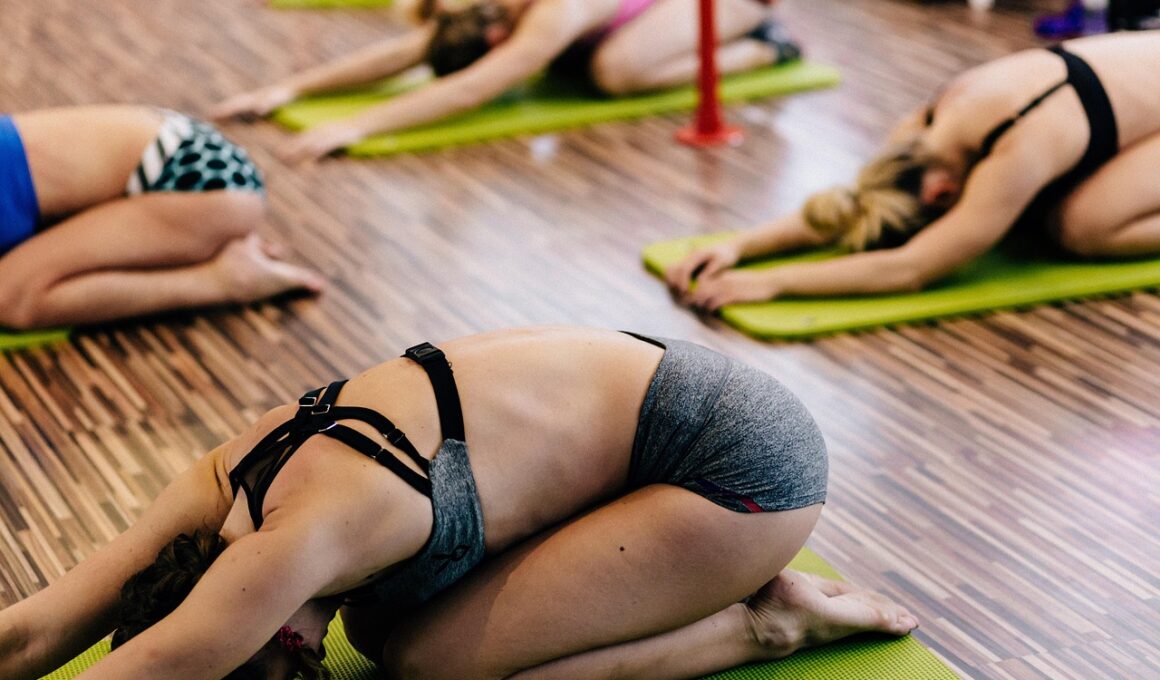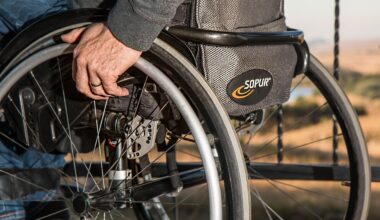The Do’s and Don’ts of Stretching After Exercise
Stretching after exercise is crucial for maintaining flexibility and preventing injury. However, it’s essential to follow proper guidelines to maximize the benefits. One primary consideration is to never stretch a cold muscle, as this can lead to strains or tears. Instead, warm up with light activity for about five to ten minutes before stretching. Incorporate dynamic stretches during your warm-up routine, which help increase blood flow to your muscles. Always hold static stretches for at least 15 to 30 seconds to effectively lengthen the muscle fibers. Focus on the major muscle groups used during your workout, ensuring all areas are adequately addressed. Additionally, don’t bounce while stretching; this can cause micro-tears in the muscle, which could lead to soreness. Instead, maintain a steady stretch to ease your muscles into the position gently. Finally, listen to your body. If you experience pain or discomfort while stretching, ease off, as this signals your body that you’re pushing too hard. Effective post-exercise stretching promotes recovery and flexibility, benefiting your overall performance and well-being.
Importance of Stretching Protocols
Establishing a safe and effective stretching routine is vital. Incorporate various stretching techniques, including static, dynamic, and proprioceptive neuromuscular facilitation (PNF). Static stretches involve holding a position to enhance flexibility, while dynamic stretches involve movement through a full range of motion. PNF combines both to improve mobility significantly. Choose stretches matching your workout type, such as hamstring stretches after leg workouts or shoulder stretches after upper body sessions. Focus on breathing as well; gentle inhalations and exhalations can help you relax into each stretch. Additionally, do not forget to hydrate post-workout to assist muscle recovery. Staying well-hydrated improves your flexibility and muscle function. Try to incorporate a few minutes of stretching into your end-of-workout routine. Keep in mind that consistency is vital to achieving long-term flexibility gains. Stretching just once a week won’t yield impressive results. Make it a habit, ideally after every workout session, to reap the maximum benefits. You can also use foam rollers as an additional tool to release muscle tension. Incorporating this technique will ensure a comprehensive approach to recovery and flexibility.
After engaging in a strenuous workout session, your muscles become tense, requiring adequate stretching to facilitate recovery. Primarily, focus on your muscles used the most during your exercise. A gentle cool-down of light walking or stationary cycling is beneficial before diving straight into stretching. Beginning your stretching routine during a cool-down phase allows your heart rate to normalize while ensuring that your muscles remain pliable. As mentioned, holding each stretch for at least 15-30 seconds is essential for muscle recovery. Combine stretches targeting the major muscle groups, such as quadriceps, hamstrings, calves, shoulders, and back. While you stretch, pay attention to your breath: use inhalation to deepen the stretch and exhalation to relax into it. Repetition is key; consider repeating each stretch at least twice if time allows. This ensures that your body adapts over time, enhancing overall flexibility. xperiment with various stretching positions to discover which ones are most comfortable for you. If you’re unsure, seeking guidance from fitness professionals can help you establish the best routine for your specific needs and goals.
Avoiding Common Mistakes
While stretching offers numerous benefits, there are common pitfalls to avoid. For example, do not rush your cooling-down routine or skip it altogether, as this can increase muscle soreness and stiffness. Prioritize quality over quantity by ensuring each stretch is performed correctly rather than trying to rush through multiple stretches. Avoid overstretching, as this can harm muscle fibers and lead to injuries. Pay attention to your body’s limits and push them gradually over time instead. Furthermore, don’t forget to balance your stretching routine; focusing too much on certain areas, like your legs, without addressing others, such as your back, can lead to imbalances. Additionally, many people tend to stretch in front of a mirror to ensure proper form, but always focus internally as well. Concentrate on what your body is telling you rather than how it looks. Lastly, avoid distractions while stretching; focusing entirely on your routine will maximize its benefits. Create a calm environment, free from distractions, allowing for a complete focus on relaxation and recovery.
Incorporating professional advice into your stretching routine can exponentially increase its effectiveness. Seek guidance from certified trainers or physical therapists to develop a personalized plan that suits your specific needs. This approach enhances recovery and ensures you perform each stretch safely and effectively. They can recommend stretching techniques tailored to your workout intensity, along with any areas requiring special attention. Additionally, consider engaging in group classes focusing on flexibility such as yoga or Pilates. These classes are often led by knowledgeable instructors who can assist with proper form and technique. This also provides an opportunity to learn from others, share experiences, and remain motivated. Furthermore, utilize technology for self-learning about stretching methods. Resources like websites, articles, and videos can offer invaluable tips on effective stretching practices. However, ensure that the sources are reputable before following any advice. Consistent assessment and adjustments to your routine are critical; as your flexibility improves, continually adapt your stretching regimen to maintain progress. Stay committed to making stretching an essential aspect of your fitness regimen for optimum results.
Additional Recovery Methods
Simplifying your recovery methods will significantly benefit muscle recovery post-exercise. Alongside stretching, consider complementary practices such as massage therapy or foam rolling. Massage therapy helps improve blood circulation and relieves muscle tension, while foam rolling aids in breaking down knots and increases overall flexibility. Engaging in these methods after exercise can help expedite performance recovery and minimize soreness. Additionally, nutrition plays a vital role; consume a balanced meal with sufficient protein and carbohydrates to repair muscle damage and replenish energy stores. Foods rich in antioxidants, like berries and leafy greens, can further aid recovery efforts. Ensuring ample hydration is crucial, as dehydration can hinder muscle flexibility and exacerbate soreness. Try to establish a post-workout recovery routine incorporating several methods, including stretching, hydration, nutrition, and possibly even relaxation techniques like deep breathing or meditation. Spending time on recovery helps ensure that you’re ready for future workouts and aids in fulfilling your overall fitness goals. Ultimately, your success in maintaining flexibility and mobility depends on your commitment to incorporating these methods into your routine.
To conclude, adopting a structured approach towards stretching after exercise is paramount for achieving optimal recovery and maintaining flexibility. Develop a consistent routine outlining your stretching exercises, and stick to it. Remember to prioritize the quality of each stretch, pay attention to your body signals, and avoid common mistakes to maximize benefits. Swipe through different techniques to discover what best fits you, and don’t hesitate to seek advice from professionals. Incorporate other recovery strategies like nutrition, hydration, and massage to enhance muscle recovery further. Stay mindful of your body’s limits and listen to its needs. Creating a well-rounded routine combining stretching and recovery will lead to improved performance and injury prevention. Embrace a lifelong commitment to flexibility and mobility, integrating it cleverly into your self-care. Constantly evaluate and refine your routine to ensure its effectiveness continues. Share your progress with others for motivation and support, as a community can encourage growth. Set realistic goals and remain dedicated to achieving better flexibility and mobility over time; your body will thank you for the commitment.
Stretching is a key component to promoting flexibility and mobility. When done correctly, it can enhance both physical performance and overall well-being.


